Silence of the shrines
For nearly half a century, the Alimuddin Chishti Mazar in Narayanganj's Rupganj was alive with devotion and music. Every Thursday night, the shrine would light up with mahfils, where Baul singers would pour their hearts out in mystic melodies.
People from all over the town and beyond gathered here, drawn by faith, tradition, and the promise of a spiritual connection.
But on the night of September 11, 2024, everything changed.
The shrine was silenced by a mob attack.
Since then, the gates remain locked, while the mosque inside still bears the scars of vandalism. The tin-and-wood house of late khadem Abdul Haque stands in ruins.
Khadem, in traditional Sufi terms, means a caretaker or servant who serves or looks after a religious site or shrine.
The reporter visited the shrine on October 8 and November 10, 2024, and then again on January 22, 2025.
During the first and last visits, no one was available for comments. However, during the second visit, Bahauddin Naqshbandi, a young local devotee, said that all khadems, imams, and devotees have been avoiding the place for fear of further attacks.
"If the government had taken effective measures from the outset and taken action against the culprits, then perhaps the attacks on shrines wouldn't have continued until this February."
After Sheikh Hasina fled the country on August 5, 2024, in the face of a mass uprising against her dictatorship, the country saw a different kind of mob attacks -- the kind never seen before on such a scale.

Scores of ancient shrines, Sufi Darbar Sharifs and Baul Fakir akhras were attacked in different parts of the country, mostly on the first few days of the power vacuum, but also throughout September amid lax law and order.
Although no attacks were reported in October and December, several shrines were targeted in November 2024 as well as January and February 2025.
In October-November 2024 and January 2025, this reporter visited at least 25 spots and spoke to devotees, khadems, and pirs. Many of them said they have not been going to the shrines out of fear of attacks.
The latest attacks took place on February 20 and 21 during Urs at two shrines in Noakhali and Manikganj.
Earlier on January 8, a 200-year-old shrine was attacked in Mymensingh, also during its Urs and Qawwali musical festival.
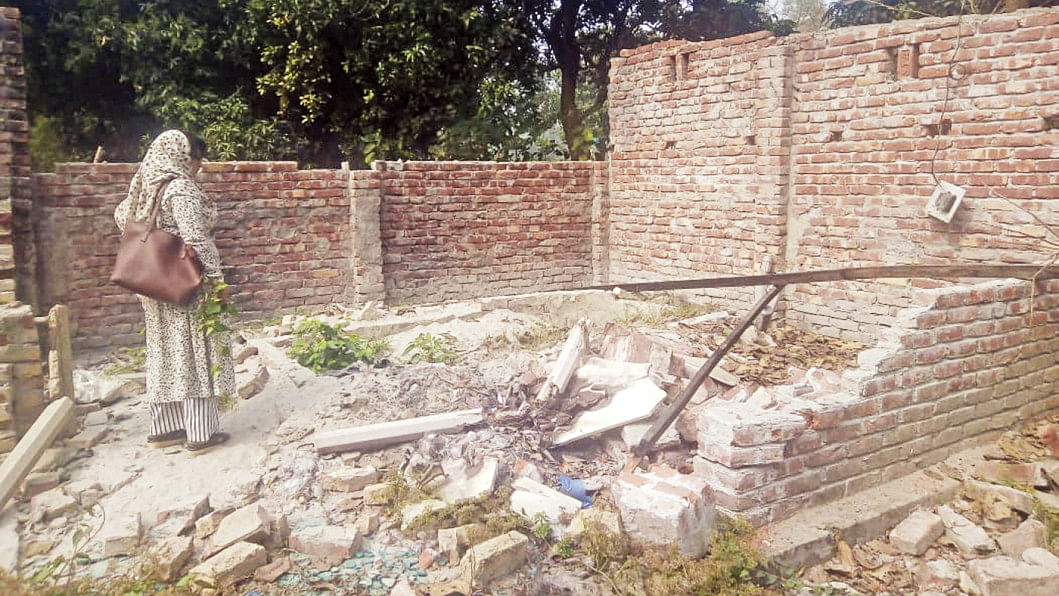
Three days later, Cultural Affairs Adviser Mostofa Sarwar Farooki told media, "Shrines, and Baul and Qawwali musical programmes are being attacked in some places. These aren't happening everywhere, but everyone must keep in mind that we won't tolerate even a single such attack."
Based on police findings, the chief adviser's press wing on January 18 confirmed attacks on at least 40 shrines since August 4.
Meanwhile, police have so far arrested 23 suspects in 15 cases. Separately, investigations into 29 general diaries with different police stations are underway, it added.
The Global Sufi Organisation at a press conference at the Jatiya Press Club on January 23 claimed that at least 80 shrines had been attacked since August.
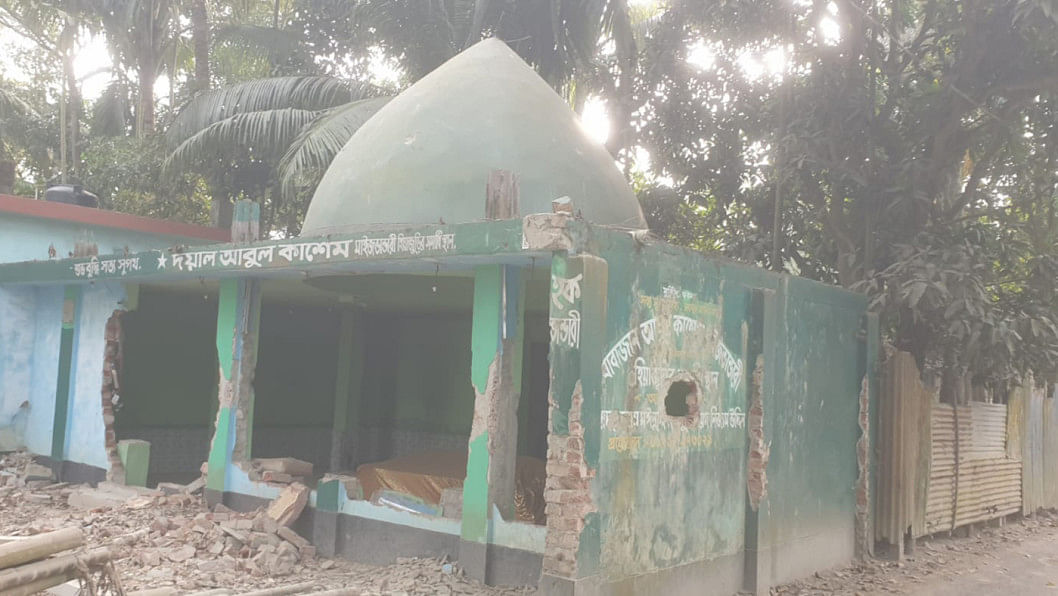
According to The Daily Star's own findings, along with counts made in media reports, over 70 shrines and akhras across the country were attacked, vandalised, set ablaze or looted in last year's August and September alone.
"Shrines, and Baul and Qawwali musical programmes are being attacked in some places. These aren't happening everywhere, but everyone must keep in mind that we won't tolerate even a single such attack."
In some instances, devotees were publicly humiliated by having their hair and beards forcibly shaved off.
The highest number of attacks – 14 -- on a single day took place on the afternoon of August 5, 2024, our findings show.
The Ashrafnagar Darbar Sharif, founded by Syed Ashraf Ali Chandpuri, in Cumilla's Laksam was one of those attacked that day.
After workers, devotees and spiritual leaders were beaten and thrown out, the attackers vandalised and looted the shrine before finally setting it on fire, Darbar Sharif sources said.
"A Darbar Sharif is a public place. Hindus, Muslims, Buddhists, Christians -- all are welcome here. People come here out of love. No one is brought here by force and if someone wants to come, they are not stopped by force," Pir Syed Md Majedul Haque Chandpuri of the Darbar Sharif told The Daily Star on the site in November last year.
Brahmanbaria's Samsu Paglar Mazar was attacked twice in two days – August 6 and 7.
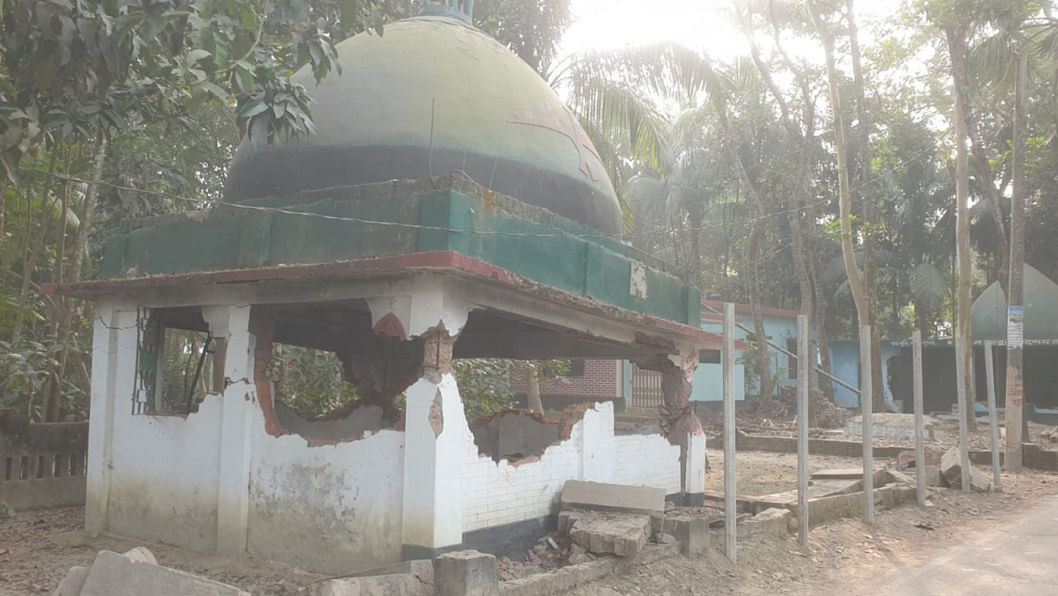
Khadem Alauddin, also a union parishad member, told The Daily Star on October 8 at the mazar compound that the attackers hit him on the head. When he regained consciousness two hours later, he found himself in a hospital with multiple stitches to his head.
In Narsingdi, even the homes of khadems and devotees were attacked and looted, said Khadem Sajal Fakir of Kappa Paglar Mazar.
There were multiple attacks also on Shah Poran's Urs in Sylhet throughout August, but by the second week of September, it turned into a clash, leaving at least 50 people injured, according to media reports.
Clashes also took place at Dewanbagh Darbar Sharif in Narayanganj's Bandar and Trishal upazilas, leaving one person killed and many others hurt, according to shrine sources, locals, and police.
The highest number of clashes between devotees and attackers took place on September 16 – the day of Eid-e-Miladunnabi -- including in Netrakona's Tarakanda, Brahmanbaria's Kasba, Feni's Dagonbhuiyan, and Kishoreganj's Kuliarchar, according to media reports.
Police and shrine sources said at least one person was killed in the Kauliarchar incident.
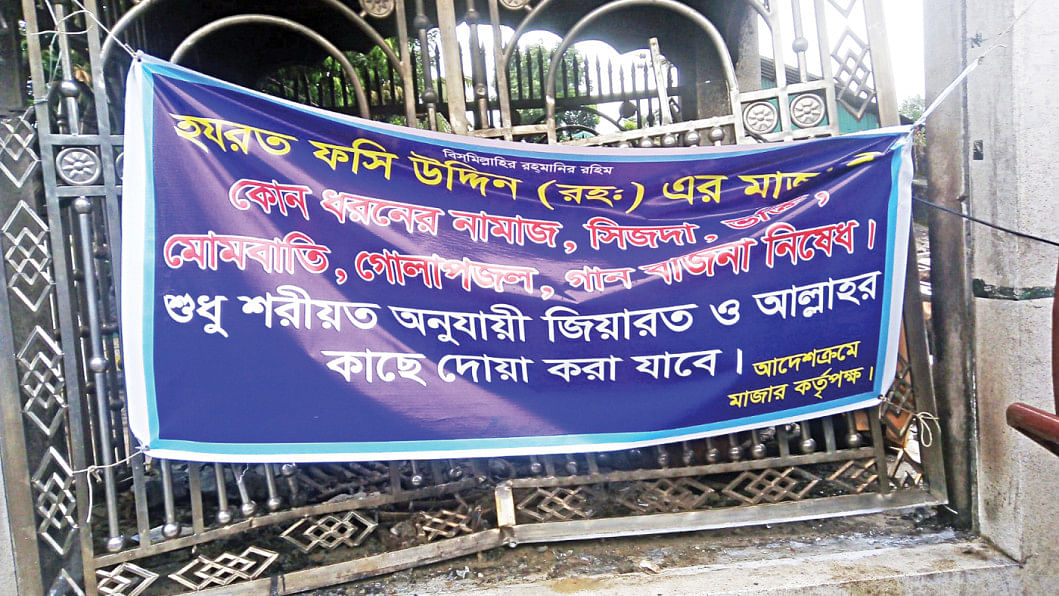
DESTROYING HERITAGE?
Many of the shrines that were attacked were ancient and have historical, archeological and religious significance.
Some were built centuries back when Islam started to gain ground in this part of the world, and the traditions of mazar and Sufism played significant roles, according to Islamic scholars.
Critics of the present-day shrine culture, however, say some activities such as singing, men and women praying side by side, and smoking are not allowed in Islam, and hence, they must stop.
Of the shrines attacked on August 5, four are traditional ancient shrines -- Bairam Shah's shrine in Dhaka, Garib Shah's shrine in Jessore, Dewan Sharif Khan's shrine in Narsingdi and Syed Reza Chishti's shrine known as Shah Bhala in Chuadanga.
The Garib Shah, Dewan Sharif Khan and Shah Bhala shrines are all large and are visited daily by devotees, Pagals, Fakirs and Bauls.
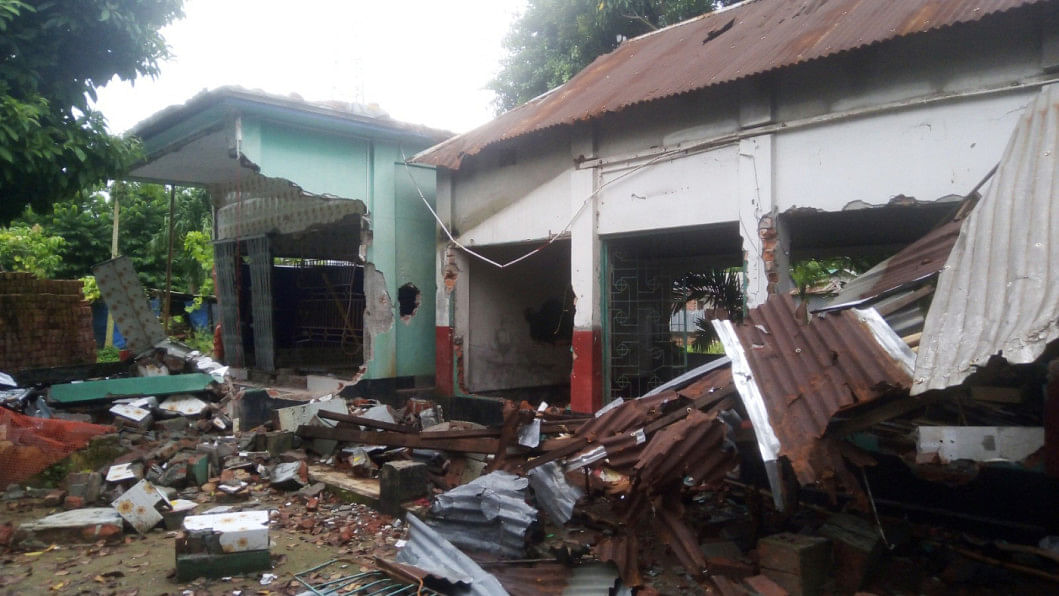
However, Bairam Shah's shrine has only one room. Hakim Habibur Rahman's book "Asudegane Dhaka" mentions that the shrine dates back to the Pathan era (roughly 13th-16th century).
The shrine of Dewan Sharif Khan, said to be a descendant of Isha Khan, is a heritage building. The main mausoleum building is constructed in Mughal architectural style with a square shape and a single dome. Next to it is a double-roofed chamber built in Bengali architectural style.
The shrine's Khadem Din Islam said, "Around 9:30pm on August 5, over 300 people came and first looted the mausoleum, its office, kitchen, caretakers' quarters, and the shelter for the devotees. They then vandalised everything. Finally, they set fire to the mausoleum and various structures."
The over 300-year-old mausoleum of Charu Miji Shah in Noakhali's Lakshmi Narayanpur area was vandalised on September 13.
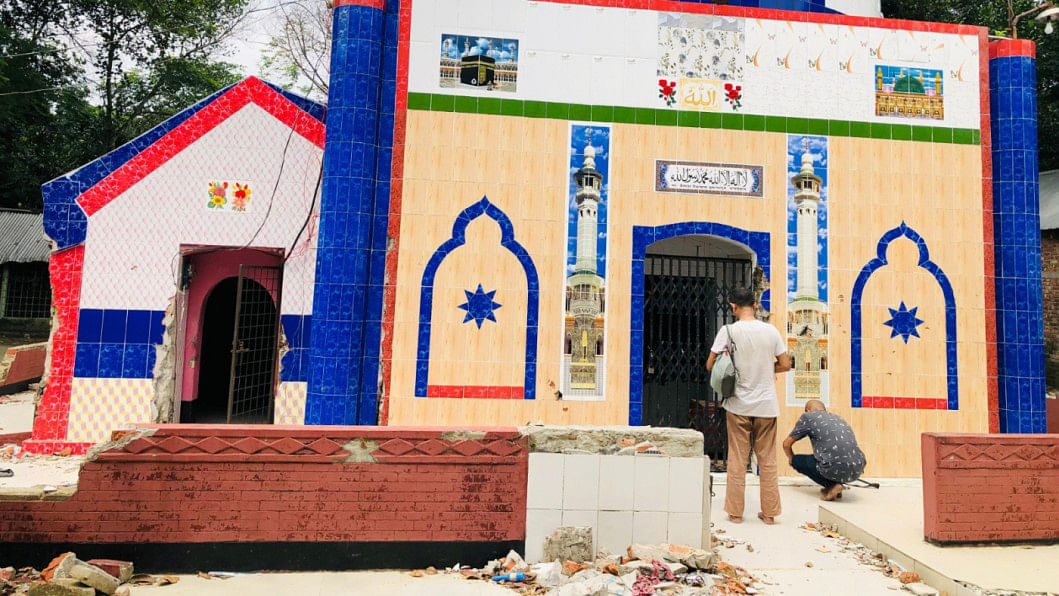
CULTURE OF SHRINES
The tradition of shrines centres around mysticism and it goes back to the early days of Islam.
These traditions of mysticism are known as Tariqa or Silsila. Within each Tariqa, practitioners are characterised by distinct qualities such as Pirs, Fakirs, and mystic devotees (Pagla). The Qalandariya and Madari Tariqa are primarily the paths followed by the spiritually-driven mystics.
In both Semitic and Indian traditions, the path of "divine madness" has been a continuous stream among devotees since ancient times, according to Islamic scholars.
Dr Mohammad Ahsanul Hadi, a Sufi researcher, said there are several opinions regarding the origin of the word "Sufi". One view suggests that the word originated from "Suffa", a place in Makkah where a group of young, unmarried emigrants from Madinah lived in poverty. They were called "Ashab al-Suffa", "Ahlus Suffa" or "Ahle Suffa".
According to him, the Ahle Suffa would remain eager for the Prophet's companionship. They would also strive to gain expertise in various branches of knowledge including religion, agriculture, crafts and the sciences.
"The Ahle Suffa often struggled to secure regular meals, some even wore tattered clothes. Some people would mock the Ahle Suffa, calling them mad," said Dr Hadi, also an associate professor at the Department of Persian Language and Literature at Dhaka University.
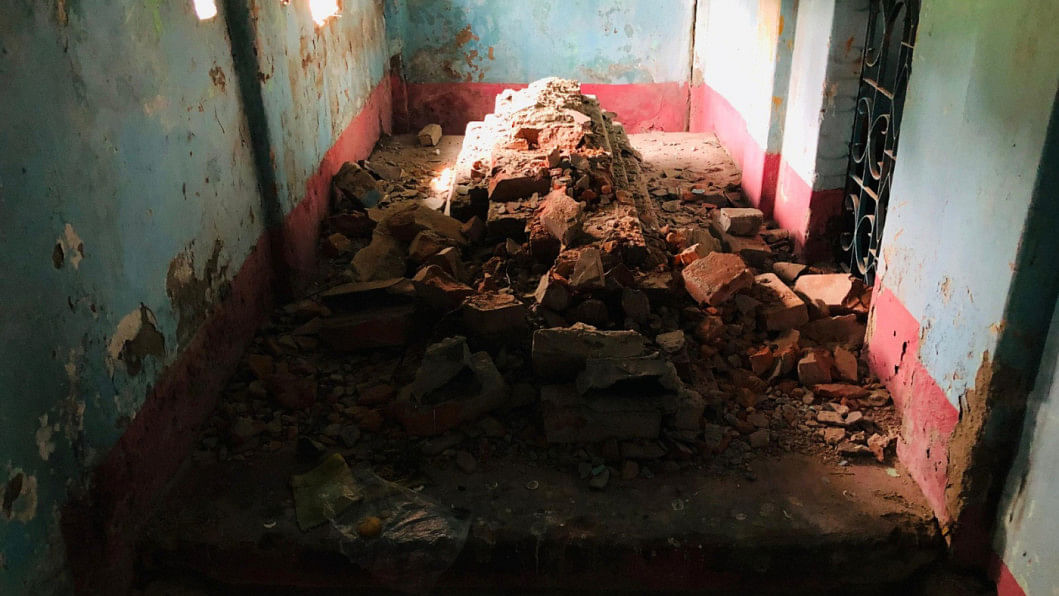
The Dargah Sharif, which serves as the centre for Sufi prayers and activities, is typically a complex establishment. Each complex houses a mosque, madrasa, Quran memorisation centre, library, orphanage, community kitchen, hospital, office, guest accommodation and storerooms. Some Dargah Sharifs maintain multiple branches.
Just as the Sufi tradition has the Darbar Sharif, the Baul-Fakirs maintain the custom of establishing akhras and ashrams, which are generally smaller compared to darbars. In many cases, a room in the corner of a residential property is converted into an akhra or ashram.
Our analysis shows that among the four types of institutions in the Islamic mystical tradition, the shrines of the Pagal-Fakirs have been the most affected. These are places where people of all faiths, races and genders have unrestricted access, and regular musical practices are conducted as part of worship. Annual Urs festivals and fairs are also organised there.
Syed Tarik, a poet and practitioner of the Sureshwari tradition of Fakiri, said shrines have their own unique culture, inviting people, including women, from all religions and castes. People pray as they wish, in their own way. There is no religious rigidity in shrines; they are "spiritual free zones", he said.
"However, the demolition of shrines is halting worship through music, while also restricting women's entry and expressions of devotion. By forcefully imposing the Sharia system, there is an attempt to destroy the shrine's unique culture. Imposing one's own opinions on others is undemocratic."
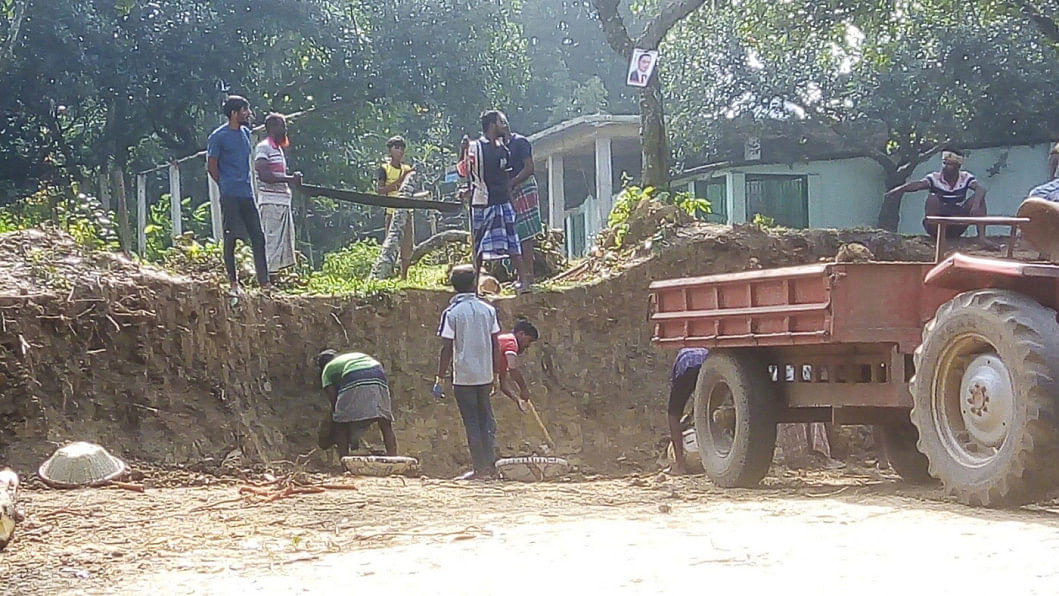
LIVING IN FEAR
Khadems and devotees across the country have been in a state of insecurity even months after the first wave of attacks.
On the other hand, Bauls, who traditionally perform at mazars both for a living and for spiritual delight, cannot fathom how fellow citizens would attack them.
Some estimates suggest, there are about 400,000 professional Baul singers in the country.
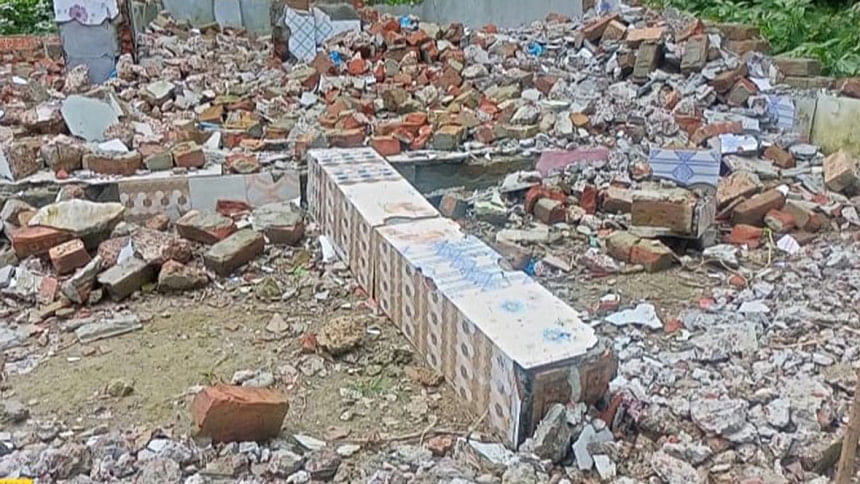
"We've been living in fear. The attackers continue to threaten us. They've even threatened to burn our homes down," said Sheikh Sadi, a devotee of Malek Darbesh Majar in Cumilla's Laksam, which came under attack in August.
This mazar's Urs festival, which usually takes place on September 8, did not take place this year.
Meanwhile, there are also examples of other mazar programmes being forcibly shut down.
In Narsingdi's Palash upazila, the Urs festival at Yusuf Ali Fakir's shrine is traditionally held on November 7 every year. This year, a group of people along with police forced the organisers to stop the programme the previous evening, said the shrine's Khadem Sajal Fakir.
In one of the country's principal shrines, Shah Paran's shrine in Sylhet, the yearly Urs did take place this year, but with no musical performance.
Musical performances as part of worship have been suspended at the surrounding shrines as well.
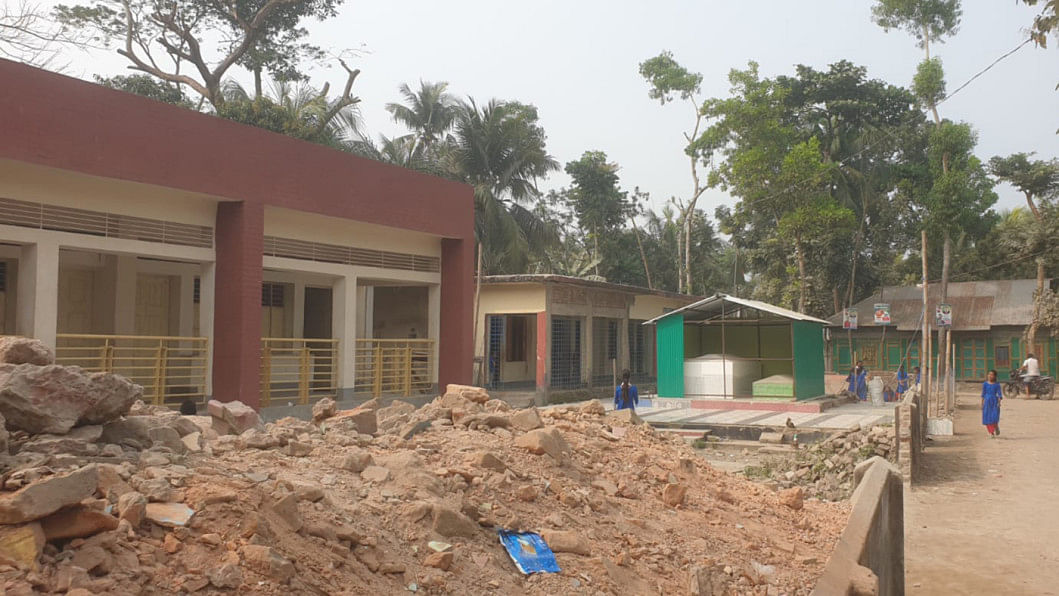
Aleya Begum, a renowned Baul artiste known as Baul Mata, said, "Typically, Bauls remain busy from the month of Kartik until just before the monsoon. However, this year they're sitting idle. This is because their performances are primarily centred around shrine-based Urs festivals, which are being obstructed in various parts of the country."
She said she too was scheduled to perform at an Urs in Bandarkhola of Madaripur's Shibchar upazila on October 8 – but it was obstructed. The organisers then took permission from the district administration to hold it on October 23, but it was stopped yet again.
"We can't engage in confrontation even when we face such resistance. Fighting is not the way of life for Bauls and Fakirs. While we've lost our incomes, what is sadder is that we've also lost our inner peace because we can't sing," she told The Daily Star.
The writer is a freelance journalist and researcher.

 For all latest news, follow The Daily Star's Google News channel.
For all latest news, follow The Daily Star's Google News channel. 




Comments